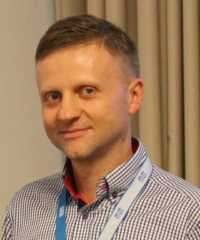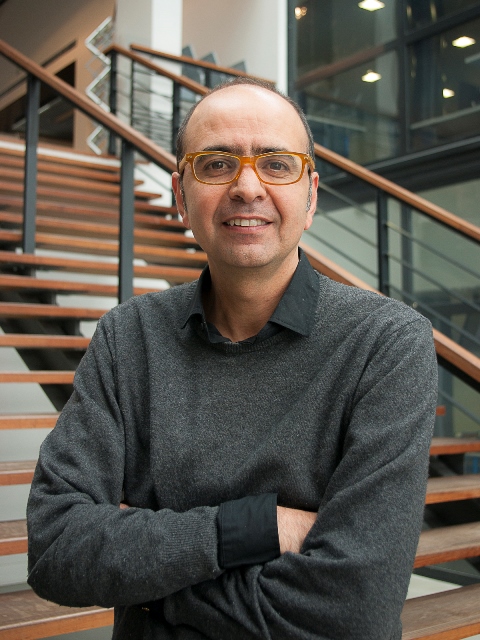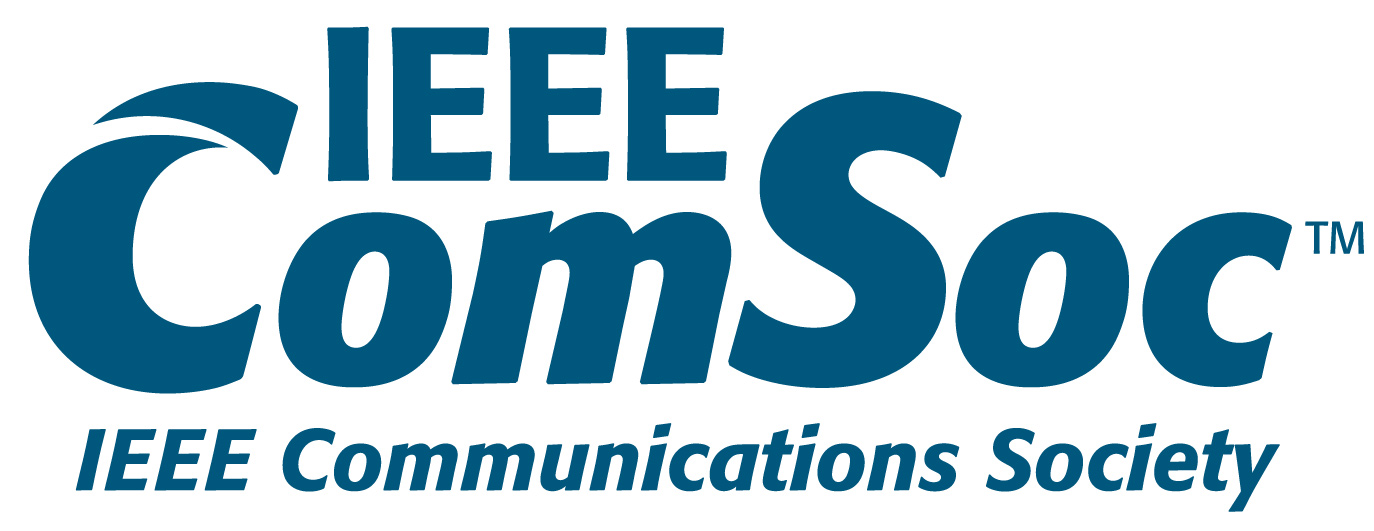Tutorials NoF 2018
Title: Spectrally-spatially flexible optical networks: technology and optimization
Abstract: Network traffic has been consistently growing at a huge speed over last few decades and across
various networks, from the optical core to fixed and mobile access. The major reason behind this
increase is due to the advent of services, applications and technologies including cloud computing,
content-oriented networking, Internet of Things and 5G. Consequently, to overcome the possible
future capacity crunch, new network technologies are required with a special focus on optical
networks that are implemented in backbone networks. At this time, there are two popular optical
approaches utilized in backbone optical networks: long-established Wavelength Switched Optical
Network (WSON) implemented with the Wavelength Division Multiplexing (WDM) technology and
more recent Elastic Optical Network (EON). The key difference between WSONs and EONs is the use
of frequency grid. In particular, WSONs operate within rigid/fixed frequency grids with 50 GHz
spacing and with single‐line‐rate (SLR) transponders making use of single-carrier modulation
techniques. In turn, EONs utilize flexible frequency grids, where the spectrum resources are divided
into narrow frequency slices of 12.5 GHz, what allows to allocate flexibly appropriate-sized optical
bandwidth, by means of a contiguous concatenation of optical spectrum, to an end-to-end lightpath
and according to traffic demand. Moreover, EONs enable the application of advanced and
spectrally‐efficient modulation formats. As a consequence, the EONs utilize network resources more
efficiently and, at the same time, they provide network connectivity adaptively and according to
bandwidth demands. However, due to the predicted traffic growth and the possibility of the capacity
crunch in the time perspective of next years, some new concepts and ideas are indispensable in
optical networks. Space division multiplexing (SDM) is a new optical network technology that goes
beyond the capabilities of spectrally-flexible EONs by supporting parallel transmission of several co-
propagating spatial modes in suitably designed optical fibers. The simplest version of SDM assumes a
use of fiber-bundles composed of physically-independent, single-mode fibers. More advanced SDM
deployments will be based on multicore fibers (MCF) or multimode fibers (MMF). Spectrally-spatially
flexible optical networks (SS-FONs), which combine SDM with EON technologies, bring many benefits
including an enormous increase in transmission capacity, extended flexibility in resource
management due to the introduction of the spatial domain, as well as potential cost savings thanks
to the sharing of resources and the use of integrated devices.
The tutorial will concentrate on spectrally-spatially flexible optical networks with a special focus of
two aspects: technology and optimization. First, the general idea of the SS-FONs technology will be
explained including details on both Elastic Optical Networks and Space-Division Multiplexing
technologies. Practical issues related to hardware and software solutions will be discussed including:
fibers, crosstalk, transponders, switching architectures and control plane. The second part of the talk
will be focused on optimization of spectrally-spatially flexible optical networks. In particular, the
basic optimization problem in SS-FONs, namely Routing, Space and Spectrum Allocation (RSSA)
problem will be formulated and analyzed. Various approaches for solving the RSSA problem will be
described including ILP (Integer Linear Programming) modeling, heuristic and metaheuristic
algorithms. Some illustrating results obtained on real topologies will be reported. The key
performance metrics that must be addressed in optimization of SS-FONs will be examined, namely,
spectrum usage, CAPEX cost, energy consumption, spectrum fragmentation. Moreover, issues
related to modeling and optimization of various traffic patterns following from cloud computing and
content-oriented networking as well as aspects of network resilience will be discussed. The last part
of the talk will be focused on new research challenges that arise in the context of SS-FONs.
Speaker

Krzysztof Walkowiak
(Wroclaw University of Science and Technology, Poland)
Biography: Krzysztof Walkowiak received the Ph.D. degree and the D.Sc. (habilitation) degree in computer science from the Wroclaw University of Science and Technology, Poland, in 2000 and 2008, respectively. In 2017, he received the professor title in technical science from President of Poland. Currently, he is working as a Full Professor at the Department of Systems and Computer Networks, Faculty of Electronics, Wroclaw University of Science and Technology. His research interest is mainly focused on modeling and optimization of communication networks including: elastic optical networks, cognitive optical networks, cloud computing, overlay networks, content-oriented networks, survivable networks. Prof. Walkowiak has been involved in many research projects related to optimization of communication networks. He received the 2014 Fabio Neri Best Paper Award, Best Paper Award in the 7th International Workshop on Design of Reliable Communication Networks (DRCN 2009), Best Paper Award in the 7th International Workshop on Reliable Networks Design and Modeling (RNDM 2015). Prof. Walkowiak published more than 250 scientific papers including over 50 papers in JCR journals, in the field of optimization and modeling of communication networks. He is an Associate Editor of the Journal of Network and Systems Management and he serves as a reviewer for many international journals and conferences. Prof. Walkowiak is a senior member of IEEE and ComSoc. Web page: https://www.kssk.pwr.edu.pl/people/walkowiak Piotr Lechowicz received his M.S. degree in computer science from the Wroclaw University of Science and Technology, Poland, in 2016. He is currently working toward his Ph.D. degree in computer science in the Department of Systems and Computer Networks, Faculty of Electronics, Wroclaw University of Science and Technology. His research interests include modeling and optimization of spectrally-spatially flexible optical networks.
Title: RAN Slicing and Control: Challenges, Technologies, and Tools
Abstract: The softwarization of network processing components coupled with virtualization of network in- frastructure constitutes the foundation for a multi-service and multi-tenant architecture. In this context, radio access network (RAN) slicing and control are emerging as a key enabler to flexibly customize and manage virtualized base stations in runetime while sharing the radio resources among them, with the objective of accommodating opera- tors, service providers, over-the-top, and service providers’ requirements. This tutorial will shed light on the challenges, solutions and technologies, and enabling tools focusing on open- source tools to realize network slicing with data-driven control in 5G leveraging machine learning (ML) tech- niques. Particularly, the tutorial will also rely on concrete prototypes and solutions with alternative RAN slicing and control approaches to assess how the performance guarantee and isolation properties are provided to each slice and how the runtime control is used to optimize the network and service objectives.
Speaker

Navid Nikaein
(EURECOM, France)
Biography: Navid Nikaein is an Associate Professor in Communication System Department at Eurecom. He received his Ph.D. degree in communication systems from the Swiss Federal Institute of Technology EPFL in 2003. He is currently leading a group on experimental 4G-5G system research related to radio access and core networks with a blend of communication, computing, and data analysis with concrete use-cases. He is very active in collaborative research projects related to 5G and beyond in the context of industry-driven projects as well European FP6, FP7, H2020 framework programmes. He is also leading the development of the radio access layer of OpenAirInterface.org and its evolution towards 5G as well as coordinating the Mosaic-5G.io initiative whose goal is to provide software-based 4G/5G service delivery platforms.
Key dates
- Paper Submission Due
July 24, 2018 (extended) - Paper Review Feedback
September 24, 2018 - Final Papers Due
October 05, 2018 - Conference
November 19-21, 2018
Previous conferences
Necessary information and links can be found under:



